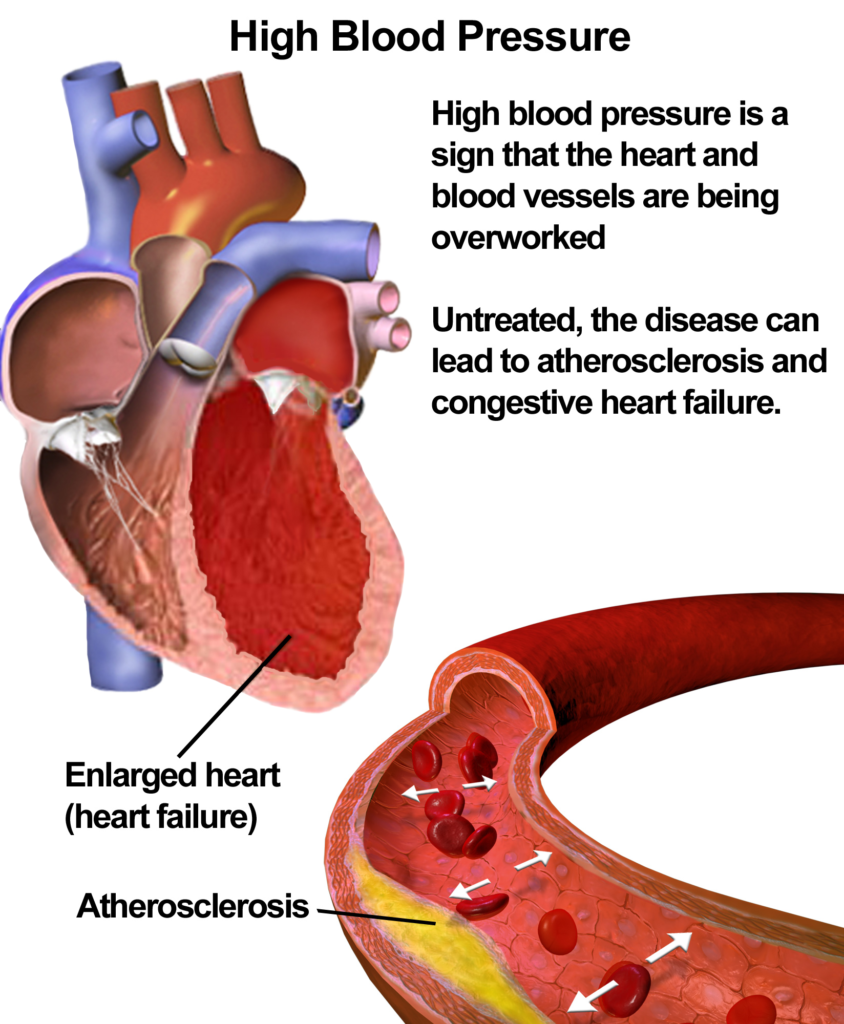Text and Photos by Henrylito D. Tacio
Additional Photos from Wikipedia
Filipinos writhing from hypertension are increasing in number, and most of them are walking time bombs which can explode anytime with serious complications.
In a report published in Medical Tribune, the Council on Hypertension (COH) of the Philippines revealed that the prevalence of hypertension in the country is steadily increasing: from 11% in 1992 to 25% in 2008. By 2012, the prevalence has risen to 28%.
“Because of the progressively increasing prevalence and the complications of hypertension, we need to study hypertension to know how to address and attack the problem in the Philippines,” pointed out Dr. Jorge Sison, the director of the Philippine Heart Association.
Unfortunately, Filipinos with hypertension are not aware of their condition until they begin to suffer illnesses that have associated complications with hypertension. “Hypertension per se does not kill, but the complications are the ones that disable and kill a hypertensive,” said Dr. Rafael Castillo, a cardiologist at the Manila Doctors’ Hospital.
Complications
Hypertension is the primary factor underlying strokes and stroke-related deaths. “Too much pressure can cause the bursting of a vessel – especially if that vessel has been weakened by age and the excess pressure of hypertension,” explains Dr. Julian Whitaker, author of Reversing Hypertension: A Vital New Program to Prevent, Treat, and Reduce High Blood Pressure.
“Hypertension also contributes to atherosclerosis and arteriosclerosis, the narrowing and stiffening of the arteries that increases the likelihood of blood clots cutting off blood supply,” Dr. Whitaker continues. “When either of these scenarios occurs in an artery in the brain, the result is a stroke. There is a reduction in oxygen supply to that area of the brain, followed by cell degeneration and death.”
A lesser-known outcome of hypertension is memory loss and an increased risk of dementia and Alzheimer’s disease. “It is believed that hypertension’s adverse effects on the brain are caused by the relentless pounding on the small vessels in the brain,” Dr. Whitaker writes. The brains of patients with hypertension actually shrink – by as much as 20 percent, according to some studies.

Banana fruit 
Tomatoes and sweet pepper are good for the heart
Hypertension also accelerates the aging of the kidneys. High blood pressure damages the arteries and arterioles that supply blood and nutrients to the kidneys. As these arteries become stiff and less elastic, the blood supply to the kidneys is reduced or, in some cases, cut off, causing damage to the kidneys themselves.
“Severe high blood pressure causes kidney malfunction over a relatively short period of time; however, even milder forms of uncontrolled hypertension can damage kidneys over several years, with no evident symptoms until severe damage has already occurred,” Dr. Whitaker claims. “Poorly controlled high blood pressure is responsible for approximately 25 percent of all cases of chronic kidney failure.”
Understanding blood pressure
Blood pressure (BP) varies naturally over a person’s life. “Infants and children normally have much lower blood pressure than adults,” notes The Merck Manual of Medical Information. Among adults, BP increases with age.
Activity temporarily affects BP, which is higher when a person is active and lower when a person rests. BP also varies with the time of day: It is said to be highest in the morning and lowest at night during sleep. These variations are normal.
“When blood pressure is checked, two values are recorded,” the Merck manual informs. “The higher value reflects the highest pressure in the arteries, which is reached when the heart contracts (during systole). The lower value reflects the lowest pressure in the arteries, which is reached just before the heart begins to contract again (during diastole). Blood pressure is written as systolic pressure/diastolic pressure — for example, 120/80 mm Hg (millimeters of mercury). This reading is referred to as ‘120 over 80.’”
A person is said to be hypertensive if he or she has persistent elevations of BP: a systolic blood pressure greater than 140 mm Hg (millimeters mercury) or diastolic blood pressure of more than 90 mm Hg.

High blood pressure (from Wikipedia) 
Minimize eating dried fish
An individual has mild hypertension if the systolic BP is between 140 to 159 mm Hg or the diastolic BP is between 90 to 99 mm Hg. When the systolic BP is higher than 160 mm Hg or a diastolic BP is greater than 100 mm Hg, a person is said to have moderate to severe hypertension.
Hypertension is called the “silent killer” for its lack of symptoms and can go undiagnosed for years. In the Philippines, the majority of those with hypertension don’t even realize they have high blood pressure.
“Practically nine out of 10 hypertensive patients have uncontrolled blood pressure which make them good candidates to develop heart attacks and strokes, or literally drop dead before they could realize what was wrong with them,” said Dr. Esperanza Cabral, who used to head the Philippine Society of Hypertension.
Studies have shown that only 14 percent of Filipinos with hypertension are aware of their condition. Of those who know they’re hypertensive, only half are taking medications; and of those who are taking medications, less than half have their blood pressure controlled to optimal levels.
According to Dr. Castillo, detection comes late in many cases, so that in 59 percent of patients detected by physicians for the first time. “Which might be too late already,” he lamented, as the harm has already started even before these people get treatment.
Treatment
High blood pressure with no known cause is called primary or essential hypertension. “Between 85% and 90% of people with high blood pressure have primary hypertension,” the Merck manual states.
Although primary hypertension cannot be cured, it can be controlled to prevent complications. “Because high blood pressure itself has no symptoms, doctors try to avoid treatments that cause side effects or interfere with a person’s lifestyle,” the Merck manual notes. “Before any drugs are prescribed, alternative measures are usually tried.”
For instance, overweight people with high blood pressure are advised to lose weight. “For people who are obese or who have diabetes or high cholesterol levels, changes in diet are important for reducing the risk of heart and blood vessel disease,” the Merck manual says. “Smokers should stop smoking.”
Reducing the intake of alcohol and sodium may make drug therapy for high blood pressure unnecessary. “Daily alcohol intake should be reduced to no more than 2 drinks,” the Merck manual suggests. “Daily sodium intake should be reduced to less than 2 grams, or sodium chloride intake to 5 grams.”
Moderate aerobic exercise is helpful. “People with primary hypertension do not have to restrict their physical activity as long as their blood pressure is controlled,” the Merck manual says. “Regular exercise helps reduce blood pressure and weight and improves the functioning of the heart and overall health.”
Drugs that are used in the treatment of high blood pressure are called antihypertensives. “With the wide variety of antihypertensives available, high blood pressure can be controlled in almost anyone, but treatment has to be tailored to the individual,” the Merck manual says. “Treatment is most effective when patient and doctor communicate well and collaborate on the treatment program.”
Prof. Hermann Haller, the director of the Department of Nephrology and Hypertension in Germany’s Hannover Medical School, said that for those undergoing medication, it is best to take medication every morning “because the early blood pressure rise in the morning.”
However, “It’s not enough that one takes something for hypertension,” Dr. Castillo said. “It’s equally important that BP be brought down to the desired levels and that the body’s vital organs including the heart, brain and kidneys are adequately protected.”
The recommended BP levels are less than 140/90 mmHg or within the 130/80 mmHg mark in patients with diabetes and chronic kidney disease.
According to Dr. Cabral, sustaining the blood pressure within the recommended level can save your life. “There is as much as 50% reduction in heart attacks; 35-40% lesser stroke risk; and 20-25% lower of myocardial infarction with adequate BP control,” the former health secretary pinpointed.
Perhaps the best thing you can do for yourself once you’ve been diagnosed with hypertension is to invest in a home blood pressure monitor. Daily measurement of your blood pressure can indicate whether your medication and home remedies are actually working to lower your blood pressure. But even if you notice an improvement, don’t stop taking a doctor-prescribed medication unless you have your physician’s approval.
“Hypertension is truly a serious problem that requires more serious attention,” points out Dr. Cabral. “It’s no longer acceptable that just any doctor can treat any patient with hypertension. Many cases of hypertension are more complicated than they seem.”

